Flying squid, also known as common squid, are captivating marine creatures found in oceans worldwide. This creatures are so facinating and unique.
Flying squid, or “flying squids,” propel themselves out of the water briefly using jet propulsion, showcasing remarkable aquatic locomotion.
Contents
What sets them apart from other squid species is their remarkable ability to glide above the water’s surface, defying gravity in a way that seems almost magical.
These unique creatures possess distinct physical features, such as elongated fins and streamlined bodies, which enable them to take flight through the air.
The phenomenon of flying squid has sparked the curiosity of scientists and nature enthusiasts alike.
How do they achieve such incredible aerial feats? What adaptations allow them to navigate both the depths of the ocean and the open skies?
Join us as we unravel the mysteries surrounding these enigmatic creatures and gain a deeper understanding of their place in the vast expanse of our oceans.
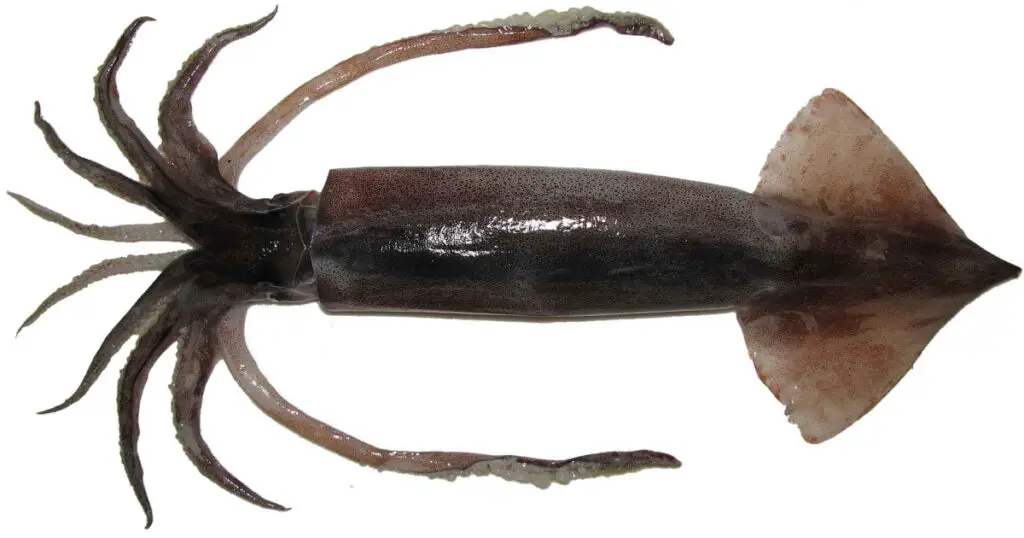
Life cycle, habitat, and biology of Flying Squid
The life cycle of flying squid is a fascinating journey that involves several stages.
These incredible creatures go through the process of mating, egg-laying, hatching, and growth to reach adulthood.
Flying squid are known to inhabit various oceanic regions around the world.
They can be found in both warm and cold waters, making them adaptable to different environments.
These agile creatures have developed unique biological adaptations that enable them to survive in their habitat.
Mating and Reproduction
Flying squid engage in a complex mating ritual. Males release sperm packets into the water, which females then collect using specialized tentacles called hectocotyli.
The female stores the sperm until she lays her eggs.
Egg-Laying and Hatching
After mating, female flying squid lay their eggs in large clusters or gelatinous masses known as egg rafts.
These rafts float near the ocean’s surface or attach themselves to floating debris. The eggs are protected within these structures until they hatch.
Once the eggs hatch, tiny larvae emerge from within. These young squid begin their journey in search of food and suitable habitats for growth.
Growth and Development
As the flying squid larvae grow, they undergo significant transformations. They develop fins for swimming and tentacles for capturing prey.
Their bodies change shape as they adapt to their environment.
During this stage, flying squid feed on small fish and plankton by using their powerful beaks to catch prey swiftly.
They have excellent vision that allows them to detect movement even in low light conditions.
Population Dynamics and Distribution Patterns
Environmental factors play a crucial role in shaping the population dynamics and distribution patterns of flying squid.
Changes in water temperature, availability of food sources, and other ecological variables influence where these creatures can thrive.
For example, warmer waters may attract certain species of flying squid while others prefer colder regions with abundant nutrients.
These factors impact the distribution and abundance of flying squid populations in different parts of the ocean.
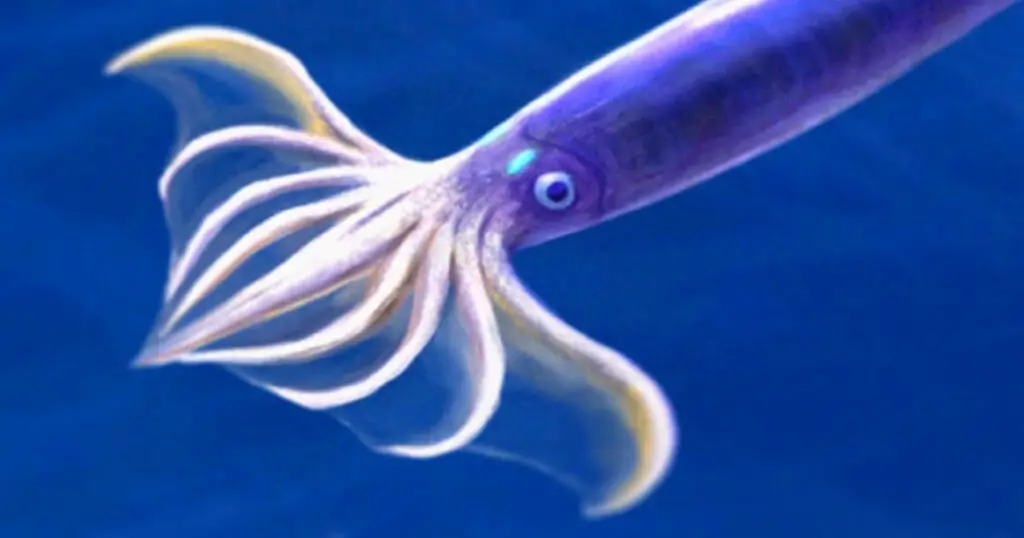
Unique behavior: Extended Fins and Flared Tentacles
Flying squid are known for their unique behaviors that allow them to glide through the air with remarkable agility.
Two specific behaviors stand out:
extending their fins for stability during flight and flaring their tentacles while airborne to enhance maneuverability.
When flying squid take to the skies, they extend their fins, which are located on either side of their bodies.
These elongated fins serve as stabilizers, helping them maintain balance and control as they soar through the air.
By extending their fins, flying squid can adjust their position and make precise movements, much like a bird adjusts its wings in flight.
In addition to extended fins, flying squid also have another trick up their sleeves – or rather, tentacles.
While airborne, these cephalopods flare out their tentacles in a magnificent display.
This behavior not only adds to the spectacle of watching a flying squid in action but also serves a practical purpose.
The flared tentacles act as rudders, allowing the squids to change direction swiftly and navigate through the air with ease.
These unique behaviors contribute to the aerodynamic capabilities of flying squid.
The extended fins provide stability and control, while the flared tentacles enhance maneuverability.
Together, they enable these fascinating creatures to glide effortlessly through the sky.
The extended fins and flared tentacles play a crucial role in the flying squid’s ability to thrive in its environment.
By taking advantage of these adaptations, they gain an edge over potential predators or competitors when hunting for food or evading danger.
Imagine being able to fly through the air using only your body parts! Flying squids have truly mastered this skill with their extended fins and flared tentacles.
It’s like having built-in wings and rudders that allow them to move gracefully through both water and air.
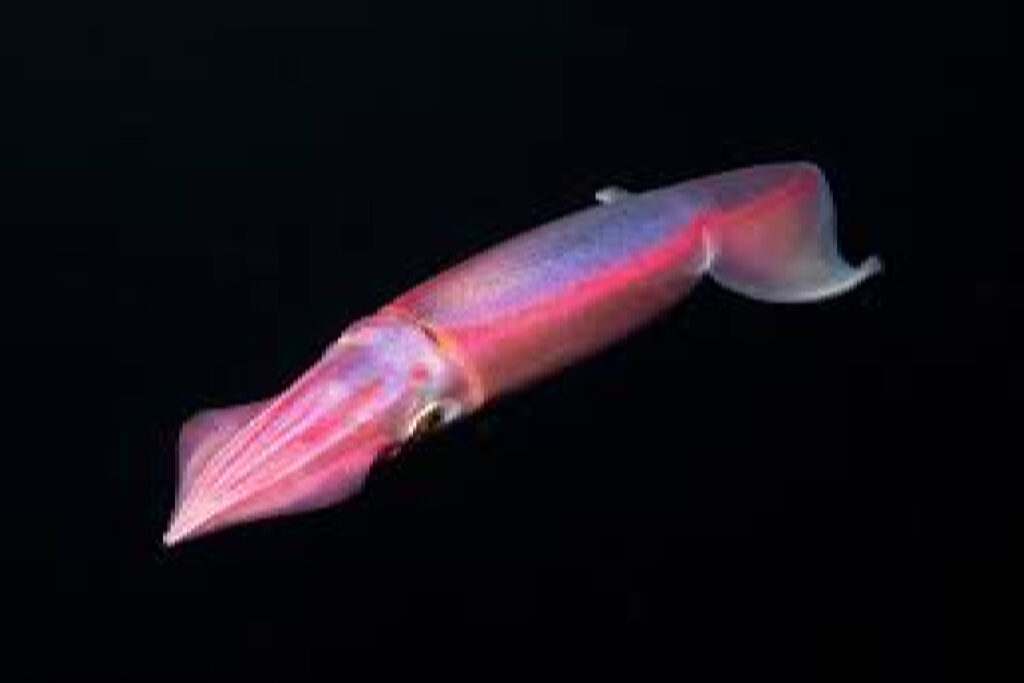
How to Catch a Flying Squid
Catching flying squid can be quite a challenge due to their unique aerial abilities.
These fascinating creatures have the ability to glide above the water’s surface, making them elusive targets for fishermen.
However, with the right techniques and understanding of their behavior, it is possible to successfully catch these remarkable cephalopods.
Specialized Fishing Techniques
To catch flying squid, specialized fishing techniques are required. One common method is jigging, which involves using a lure that mimics the movement of prey.
The angler repeatedly jerks or “jigs” the lure up and down in the water, attracting the attention of nearby squid.
This technique can be particularly effective when targeting flying squid as they are attracted to movement.
Another approach is using light attractors such as LED lights or glow sticks attached to fishing lines.
These lights mimic bioluminescent organisms that flying squid feed on during their nighttime hunts.
By illuminating the surrounding area, these attractors draw in squid looking for food.
Understanding Feeding Habits
Understanding the feeding habits of flying squid can greatly improve your chances of catching them.
These creatures primarily feed on small fish and plankton near the water’s surface. They are most active at night when they rise closer to the surface in search of prey.
To optimize your chances of success, consider fishing during dusk or dawn when flying squid are more likely to be actively hunting.
Look for areas with an abundance of small fish or plankton populations as this indicates potential feeding grounds for these cephalopods.
Commercial Fisheries and Economic Value
Flying squid holds significant economic value in commercial fisheries around the world.
Due to their popularity in certain cuisines and high demand from consumers, many commercial fishermen specifically target these elusive creatures.
In regions like Japan and South Korea, where flying squid is considered a delicacy, there is a thriving industry centered around its capture and sale.
These commercial fisheries employ various methods to catch flying squid, ranging from traditional fishing nets to more advanced techniques like using artificial light attractors.
The economic value of flying squid has led to regulations and management strategies in some areas to ensure sustainable fishing practices.
By understanding the importance of these creatures in local economies.
Efforts can be made to protect their populations and maintain a balance between conservation and harvesting.
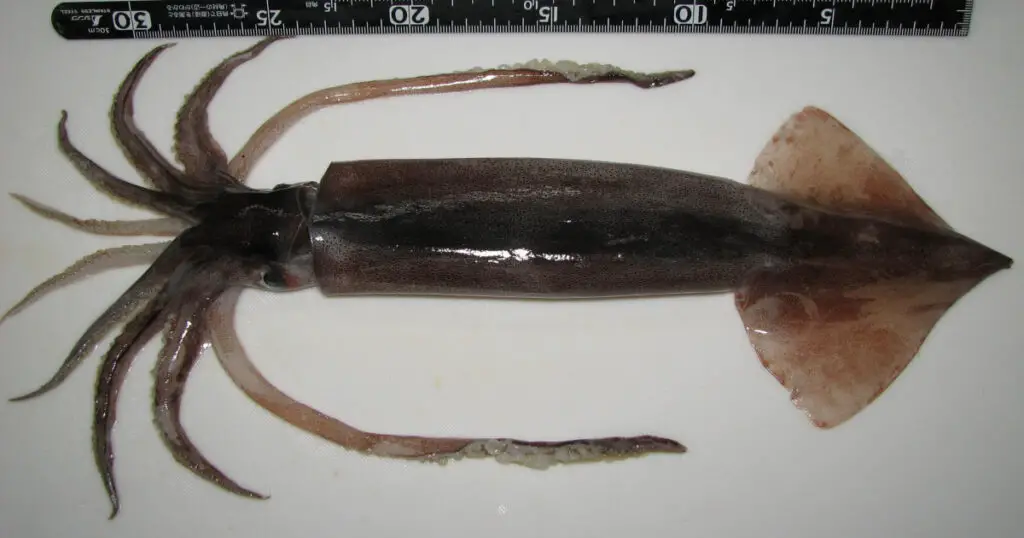
Feeding ecology and behaviors of Flying Squid
Flying squid, also known as Todarodes pacificus, are fascinating creatures with unique feeding habits and behaviors.
Understanding their feeding ecology provides us with valuable insights into their role in marine ecosystems and the impact they have on fisheries.
Carnivorous Predators
Flying squid are carnivorous predators that primarily feed on small fish and crustaceans.
They have a voracious appetite and use various strategies to secure their meals.
Ambush Tactics or Active Pursuit
Flying squid employ two main techniques: ambush tactics and active pursuit.
In ambush tactics, these agile swimmers remain motionless in the water, camouflaging themselves to blend in with their surroundings.
Once unsuspecting prey swim by, the flying squid swiftly strikes, capturing its meal with lightning speed.
On the other hand, some flying squid species actively pursue their prey using their remarkable swimming skills.
With powerful jet propulsion and flexible bodies, they can chase down fast-moving fish or crustaceans.
Adaptability to Prey Availability and Environmental Conditions
The feeding behaviors of flying squid vary depending on factors such as prey availability and environmental conditions.
These adaptable creatures adjust their hunting strategies based on what is most advantageous at any given time.
For example, if there is an abundance of small fish in a particular area, flying squid may opt for active pursuit to capture multiple prey items quickly.
Conversely, when food sources are scarce or dispersed over a larger area, they may resort to ambush tactics to conserve energy while maximizing their chances of catching a meal.
Ecological Role in Marine Ecosystems
Studying the feeding ecology of flying squid is crucial for understanding the ecological role they play in marine ecosystems.
As carnivorous predators near the top of the food chain, they help regulate populations of smaller organisms like fish and crustaceans.
By controlling the abundance of their prey, flying squid indirectly influence the overall balance and health of marine ecosystems.
Their feeding habits contribute to the intricate web of interactions that sustain life beneath the ocean’s surface.
Impact on Fisheries
Flying squid have a significant impact on fisheries, both economically and ecologically.
They are a valuable commercial species in many regions, supporting local fishing industries and providing a source of income for fishermen.
However, overfishing can disrupt the delicate balance between flying squid populations and their prey.
It is essential to manage fisheries sustainably to ensure the long-term viability of these creatures and maintain healthy marine ecosystems.
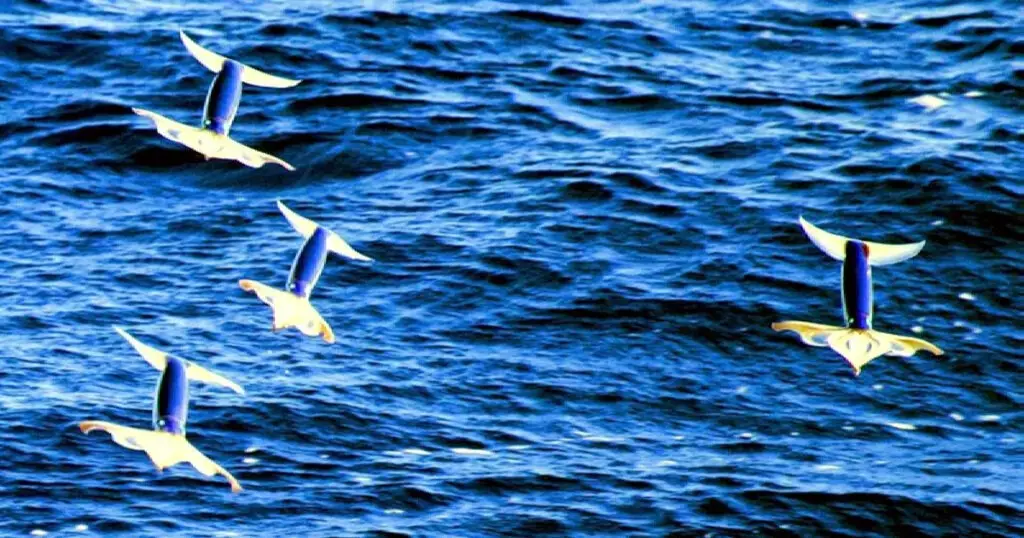
Exploring the concept of flying in Flying Squid
Despite being called “flying” squid, these creatures do not possess true flight capabilities like birds or insects.
The term “flying” actually refers to their unique ability to glide above water using a technique called jet propulsion.
The neon flying squid, also known as Ommastrephes bartramii, is one species that exhibits this fascinating behavior.
They have developed a remarkable method that allows them to soar through the air and cover impressive distances.
Gliding Above Water with Jet Propulsion
Flying squid employ an ingenious system of movement that involves expelling water forcefully from their bodies.
By contracting their muscular mantle cavity, they can eject jets of water behind them. This expulsion creates a forward thrust and propels them through the water.
But here’s where things get interesting: these squids have evolved a specialized structure known as a patagium.
This thin, flexible membrane acts as a wing-like structure and helps them glide above the surface of the water.
As they release the jets of water, the force generated lifts their body off the surface, enabling them to glide for short distances.
Unraveling the Physics of Flying Squid
Understanding the physics behind flying squid’s gliding behavior is crucial in unraveling the mysteries surrounding their unique locomotion.
Researchers have been studying various factors that contribute to their ability to stay airborne for brief periods.
One important factor is temperature. Studies have shown that warmer waters provide better conditions for gliding because warm air has lower density than cold air.
This difference in density creates more lift and allows squids to remain airborne for longer durations.
Another factor is size and weight distribution. Larger squids tend to have greater buoyancy due to larger fins and increased surface area of their patagiums.
Having denser muscle tissue towards their rear end helps maintain stability during gliding.
The Implications of Flying Squid’s Gliding Behavior
The gliding behavior of flying squid has significant implications for their survival and reproduction.
It allows them to cover large distances quickly, which is particularly useful during spawning season when they need to find suitable areas for laying their eggs.
This unique mode of transportation also affects fishing practices. Fishermen often encounter these squids when they are in mid-air, gliding above the water surface.
This behavior makes it challenging to catch them using traditional fishing methods, as they can quickly escape by diving back into the water.
Understanding how flying squid glide can potentially inspire advancements in technology.
Researchers have been looking into biomimicry, using nature’s designs to develop innovative solutions for various applications.
Studying the mechanics of flying squid’s gliding ability may lead to advancements in aerodynamics and propulsion systems.
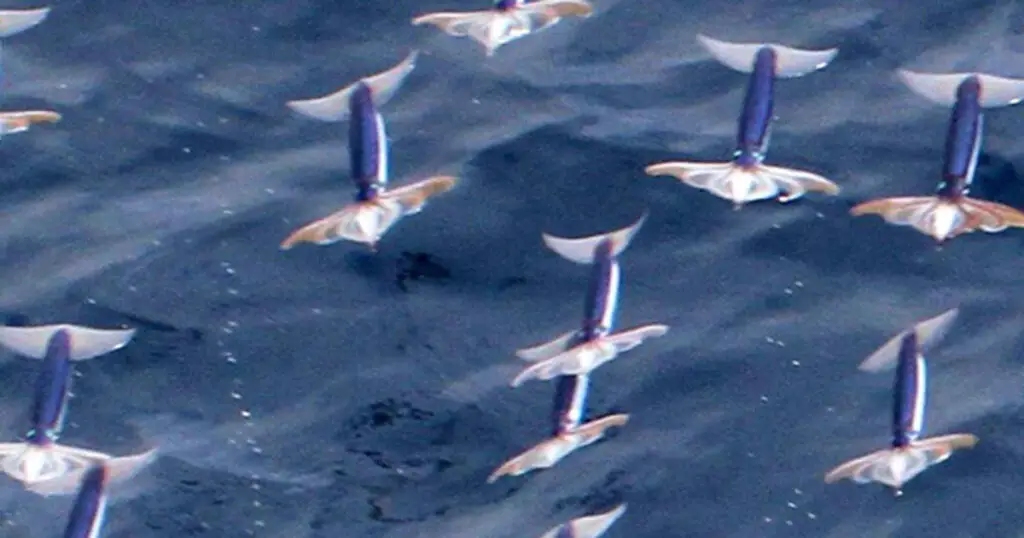
How the Flying Squid Swim?
Flying squid are fascinating creatures that have developed unique adaptations to navigate through the water.
Let’s dive into how these incredible cephalopods swim!
Undulating Fin Movements and Jet Propulsion
Flying squid employ a combination of undulating fin movements and jet propulsion to propel themselves through the water.
Their fins, located on either side of their bodies, flap rapidly in a wave-like motion. This movement helps them generate forward momentum and maintain balance while swimming.
Muscular Mantles for Propulsion
One of the key features that enable flying squid to swim is their muscular mantles.The mantle is a fleshy covering that surrounds their internal organs.
By contracting rapidly, the mantles expel water forcefully from a funnel-shaped structure called the siphon.
Controlling Speed and Direction
By adjusting the contractions of their mantles, flying squid can control both their speed and direction while swimming.
When they contract their mantles more forcefully, they expel larger amounts of water, resulting in faster propulsion.
On the other hand, by reducing mantle contractions, they slow down or come to a stop.
Coordination between Fin Movements and Mantle Contractions
The coordination between fin movements and mantle contractions is crucial for efficient swimming in flying squid.
As they contract their mantles to expel water, they simultaneously use their fins to create additional thrust.
This coordination allows them to move swiftly through the water with minimal effort.
Adaptations for Survival
The ability of flying squid to swim using undulating fin movements and jet propulsion is essential for survival in their marine environment.
It enables them to evade predators, search for prey, and migrate over long distances.
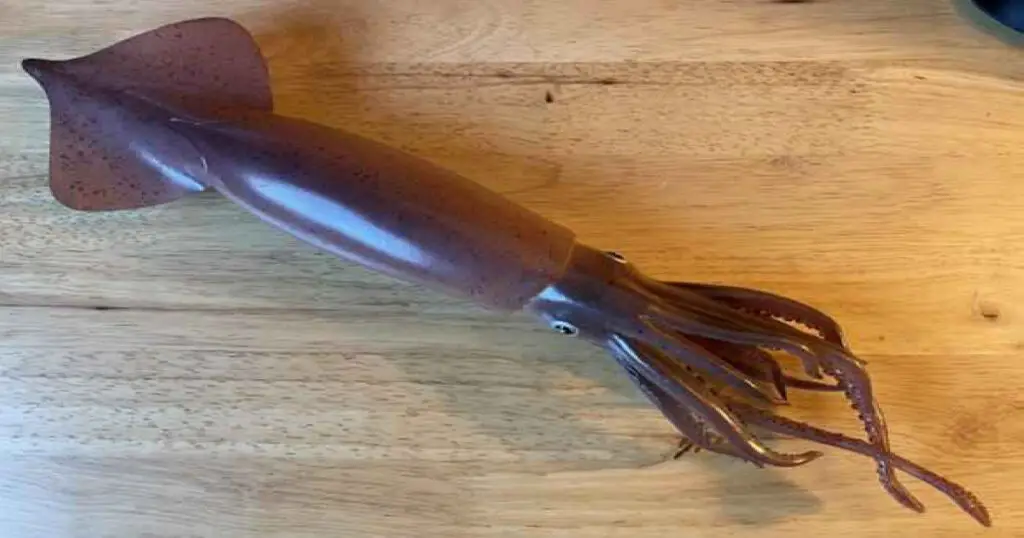
Unraveling the Mysteries of Flying Squids
Scientists are still uncovering many aspects of flying squid biology and behavior.
These enigmatic creatures have fascinated researchers for years, and ongoing studies are shedding light on their remarkable abilities.
Efforts in understanding their flight mechanics and adaptations for aerial movement have been at the forefront of research.
Flight Mechanics and Adaptations
One of the primary focuses of scientific investigation is how flying squids are able to take to the skies.
These cephalopods possess a unique ability to propel themselves out of the water using powerful jets of water expelled from their bodies.
By rapidly expelling water through a funnel-like structure, they generate enough force to launch themselves into the air.
Once airborne, flying squids display remarkable aerodynamic capabilities.
They have evolved elongated fins that resemble wings, enabling them to glide through the air with relative ease.
These fins, combined with their streamlined bodies, allow them to maneuver swiftly through the sky as they hunt for prey or evade potential predators.
Ecological Role in Marine Ecosystems
Investigating the ecological role of flying squids provides valuable insights into their significance within marine ecosystems.
These creatures primarily inhabit ocean waters but may venture closer to the surface during certain periods or when pursuing prey.
Their ability to fly allows them access to different areas within marine environments, expanding their range and potential impact on other species.
Flying squids play a crucial role in maintaining balance within marine food webs. They are voracious predators, feeding on smaller organisms such as fish and plankton.
By controlling populations of these prey species, flying squids help regulate ecosystem dynamics and ensure overall stability.
Contributions to Scientific Knowledge
Continued studies on flying squids contribute significantly to our understanding of these fascinating creatures.
Researchers employ various methods such as capturing specimens in nets or using underwater cameras to observe their behavior in their natural habitat.
Through these efforts, scientists gather valuable data on their movement patterns, feeding habits, and reproductive strategies.
Advancements in technology have also allowed for the collection of high-resolution images and videos of flying squids in action.
These visual records provide researchers with a wealth of information to analyze and further unravel the mysteries surrounding these elusive creatures.
Research conducted by institutions such as the University of California has revealed intriguing findings about flying squids.
For example, it was discovered that some species can remain airborne for several seconds at a time, covering distances of up to 30 meters.
This remarkable feat showcases the impressive capabilities of these cephalopods.
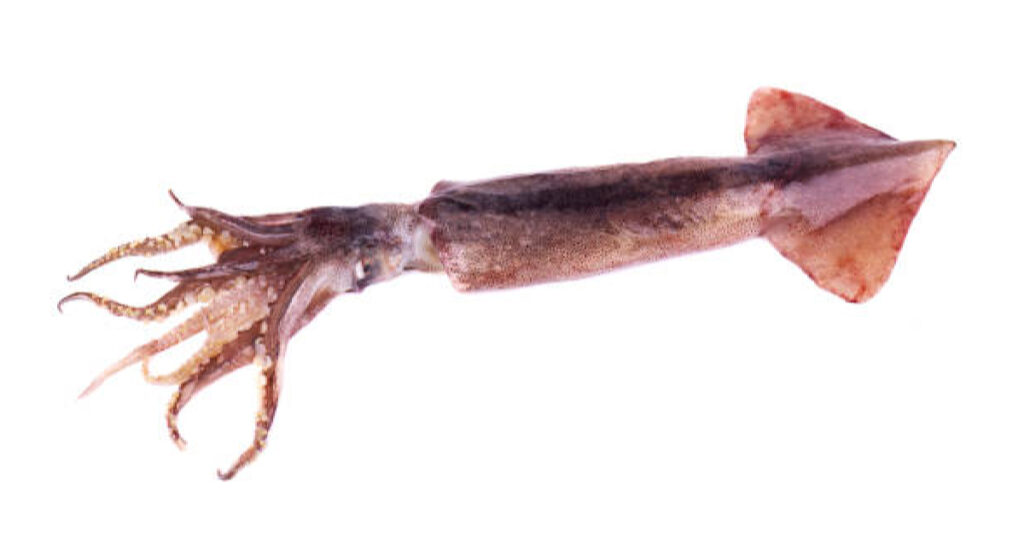
Conclusion
In this comprehensive exploration of flying squid, we have delved into their intriguing life cycle, habitat, unique behaviors, and feeding ecology.
We have also explored the concept of flying in these remarkable creatures and unraveled some of the mysteries surrounding them.
By understanding the biology and behavior of flying squid, we gain valuable insights into their world and appreciate their remarkable adaptations.
As you continue to delve deeper into the world of marine creatures, consider how these insights can inform your own experiences.
Whether you are a scientist studying marine biology or an enthusiast seeking to understand the wonders of nature.
Take this newfound knowledge as an invitation to explore further.
Dive into the depths of research, observe these fascinating creatures in their natural habitat if possible, and engage with others who share your curiosity.
Together, let’s continue unraveling the secrets that lie beneath our oceans’ surfaces.
FAQs
1. Can flying squids actually fly?
Flying squids cannot fly in the traditional sense like birds or insects do. They utilize a unique form of locomotion called “gliding.” By extending their fins and flaring their tentacles, they create a wing-like structure that allows them to glide above water for short distances.
2. How do flying squids catch prey while gliding?
While gliding through the air above water, flying squids use their long tentacles to snatch prey from just below the surface. With lightning-fast reflexes and excellent coordination, they capture small fish or planktonic organisms that come within reach.
3. Are there different species of flying squid?
Yes, there are several species of flying squid found worldwide. Some common ones include Todarodes pacificus (Japanese flying squid) and Ommastrephes bartramii (Neon flying squid). Each species has its own unique characteristics and adaptations suited for survival in different environments.
4. How fast can flying squids glide?
Flying squids are capable of reaching impressive speeds while gliding through the air above water. Some species have been recorded to reach speeds of up to 11 meters per second (24 miles per hour), allowing them to cover significant distances in a short amount of time.
5. Can flying squids fly for long distances?
While flying squids can glide for short distances, they are not capable of sustained flight over long distances like birds or bats. Their gliding ability is mainly used as an escape mechanism from predators or to search for food in nearby areas.

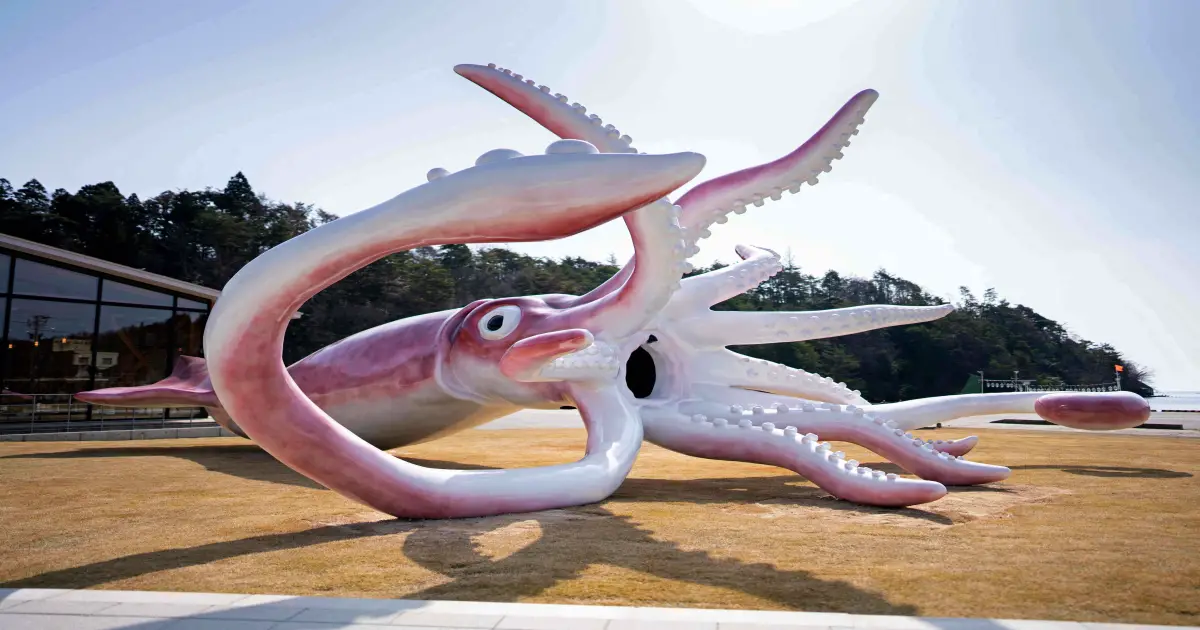
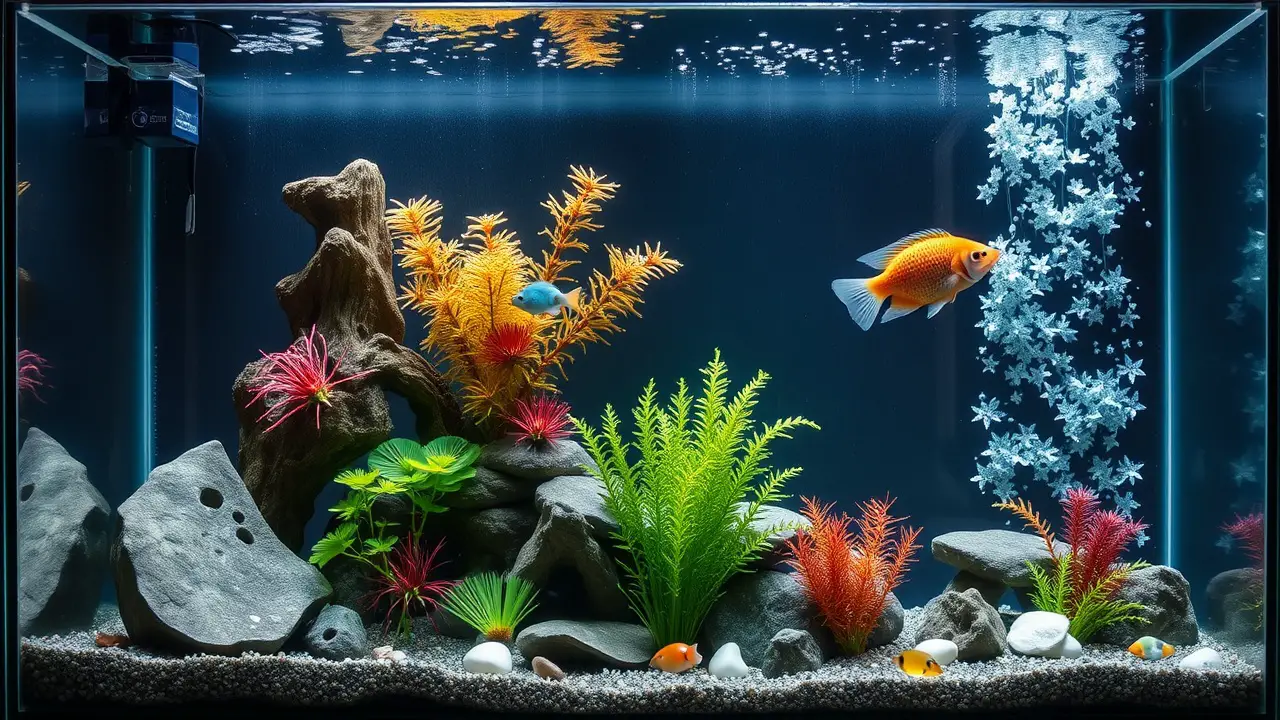
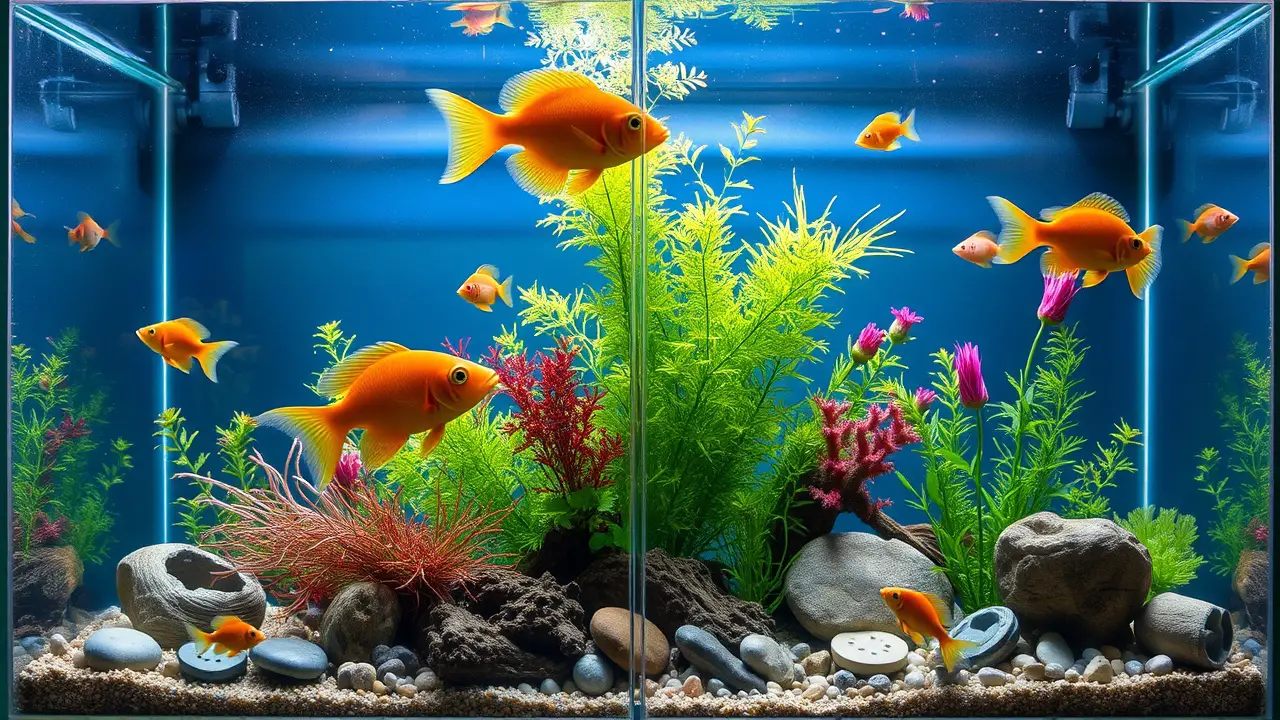
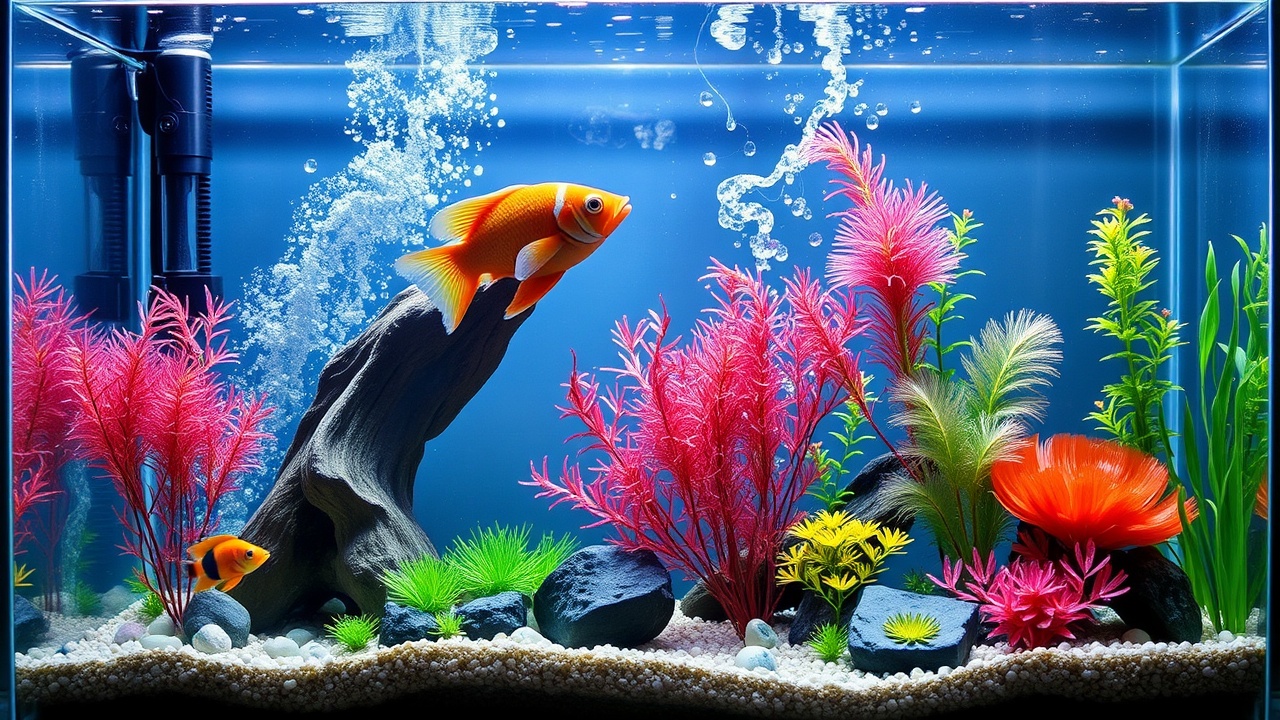
Leave a Reply